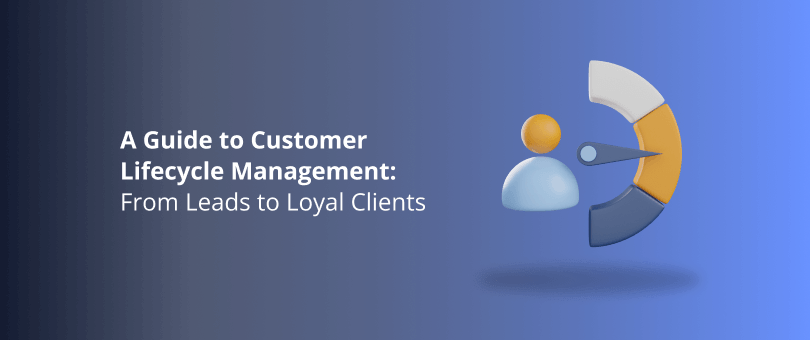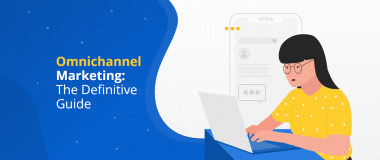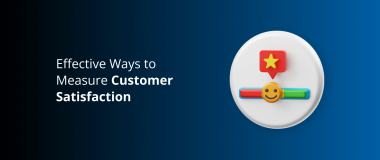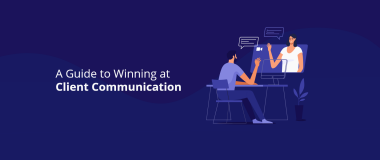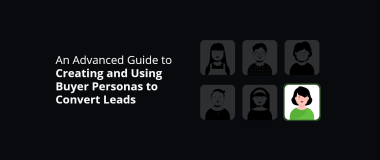With strong customer lifecycle management, organizations can build long-term mutually beneficial relationships with their audience and power business growth. It’s a practice that leverages powerful insights to help businesses cautiously improve and increase the value and satisfaction of their clients.
Customer lifecycle management (CLM) represents a set of tools and practices that help brands provide personalized and high-quality services to their leads and clients. It involves linking the separate stages of the customer journey and assigning metrics to each one. As part of your marketing strategy, CLM can assist your team in creating effective customer journeys, improving brand reputation, promoting customer loyalty, and motivating leads to become brand advocates.
“Customer Lifecycle” is a marketing strategy that leverages a mix of marketing techniques to offer the highest value to customers at each lifecycle stage. It works on one principle – personalizing customer communications based on the stage of a customer’s journey with your brand. This approach helps brands to segment the customer base granularly, customize the marketing efforts to specific groups, and allocate resources optimally. By tracking user interactions, analyzing data to understand customer behavior patterns, and assigning value based on factors such as purchase frequency, average order value, and customer lifetime value, you can measure the success of these metrics and optimize your marketing efforts.
In this article, we’ll be explaining to you what customer lifecycle management is and what it does. We’ll be walking you through its separate stages and presenting to you some marketing strategies that can help you improve your customer retention rate.
What Does Customer Lifecycle Management Do?
Before we go into details of what customer lifecycle management does, let’s recap what customer lifecycle is.
The customer lifecycle is the process through which prospects become longtime customers. It’s made up of five stages – reach, acquisition, development, retention, and loyalty, and follows consumers as they become aware of a brand and its products, make a purchase, and hopefully become returning customers.
While this definition sounds quite similar to the buyer’s journey, it actually goes beyond it. The customer lifecycle takes into account what happens after a purchase is made, to help brands understand how their audience interacts with them.
Customer lifecycle management is all about assigning relevant metrics to each stage of the journey so that you can track performance and measure success. It allows you to monitor the efficiency of your business so you can control the customer journey.
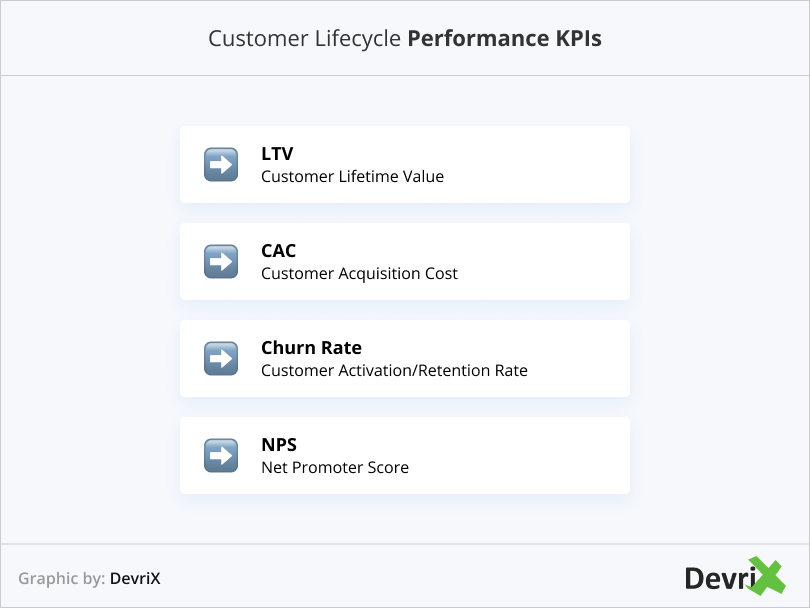
Why Is Customer Lifecycle Management Important?
To address your customers successfully, you need to understand which stage of the lifecycle journey they’re currently at. By doing so, you’ll be able to provide meaningful and personalized communication and create more precisely targeted campaigns.
The customer lifecycle is a non-linear process, even though it’s often presented graphically as a progression of stages. Customers might skip phases which is why you must track and analyze brand interactions. With the help of CLM, you can improve the overall client experience.
If you combine customer lifecycle management with a customer relationship management (CRM) system, you can significantly enhance the effectiveness of every lifecycle stage.
The more advanced your CRM and CLM are, the better you’ll be able to handle customer communications and data. This will also provide you with a nice overall picture of your core audience while finding new opportunities to build loyalty and respond to customer insights.
The 5 Key Stages of Customer Lifecycle Management
CLM involves assigning relevant metrics to each customer lifecycle stage, so to help your business gain a deeper understanding of the customer journey, we will go over the whole process and distinguish each stage.
1. Reach
This is the very first stage of the customer journey and as such, it is the moment when prospects have become aware of a problem they have, and begin looking for a way to solve it.
About 81% of shoppers conduct product research online before making a purchase. They review products and services from different brands to find those that match their needs best.
Here is where, as a marketer, it is your job to get your brand on your potential buyers’ radar. This involves preparing informational content and using inbound and unbound strategies like search engine optimization, social media marketing, and SEO to make sure individuals can easily find it.
How Does This Apply to CLM?
- Define Your Target Audience: To create content that resonates with your audience, you need to understand their needs and preferences. One way to do this is by creating buyer personas that reflect the behavioral and demographic characteristics of your client base. This will help you segment your customer base granularly, customize your marketing efforts to specific groups, and allocate resources optimally. It’s important to update these characteristics as your customers’ needs evolve.
- Create Relevant Content: At this stage of the customer lifecycle, you should convince your prospects to invest in you. As such you should provide original, engaging, useful, and search-engine-optimized content that can not only put your brand at the top SERPs but can also put it at the top of users’ minds whenever they are looking for information on a related topic.
2. Acquisition
This is the stage where customers make direct contact with your brand whether it’s on your website, through your social media, or on the phone. It will differ depending on the channel used so you may have to adapt your communications accordingly.
Additionally, make sure that every time you come into contact with your customers you are providing them with relevant information about your product. This means using appropriate customer acquisition strategies and offering educational content that can support their decision-making processes.
How Does This Apply to CLM?
- Provide Self-service Resources: Offer as much information about your product/services and brand as possible to help users make informed decisions. According to Salesforce, customers want to make up their minds on their own, so give them the space to do it. Make sure you have detailed product descriptions and a FAQ page. Also add a contact form, a chatbot, or links to your other social media accounts so users can directly reach out to you if they need to.
- Have Proactive Customer Service: While self-service resources are quite helpful, it’s also important to provide proactive assistance. This means reaching out to leads so you can help them get better acquainted with your products/services. You can do this by sending an email to a person who has subscribed to your newsletter or following up on a review they’ve left on your site. This is a double-win situation as you’ll be able to promote your brand and establish a more personal relationship.
3. Conversion
When your prospects reach the stage of conversion it means that they already have an intent to purchase. At this point, they have done their research and decided that this type of product or service will indeed solve their problems. So, now it is your job to convince them that your brand can do the job better than any other out there.
This means that you should concentrate your efforts on providing valuable experiences that can turn prospects into leads. The goal is to build a closer relationship with your clients and encourage them to keep returning to your brand.
How Does This Apply to CLM?
- Remove Friction: Analyze the purchasing process and consider the points that can lead to frustration. For instance, take a look at your checkout process and your site’s heatmap. These will help you see where customers lose the most time or bounce from the site altogether. Then think of ways to remove this friction so their purchase can be done quicker and easier.
- Give Options When Offering Support: Sometimes the purchasing stage can cause stress depending on the nature of your products/services. For instance, if you’re selling software that needs some training, make sure to provide additional assistance such as a live chat or demo. The more supported your client feels the better their experience will be.
4. Retention
When your customers have reached the retention stage, you need to reach out to them and collect their feedback. You can achieve this in multiple ways: by carrying out customer experience surveys, measuring your customer satisfaction score, sending them a follow-up email, and so on. You can even offer exclusive perks like referral bonuses, discount codes, and live 24/7 support.
By gaining insight directly from your audience, you’ll be able to make timely improvements to your products and features, and to your customer experience.
The goal is to turn a one-time purchaser into a loyal customer and maybe even a brand promoter.
How Does This Apply to CLM?
- Personalize the Customer Experience: Ensuring a seamless transition from pre-purchase to post-purchase is crucial. Implement this effective strategy by sending personalized follow-up emails, making post-purchase calls, or utilizing account notifications to express gratitude and provide extra perks. Prioritize attentive listening to customer feedback, and promptly addressing any concerns to boost satisfaction.
- Automate: The larger your customer base is, the more post-sale reaching out you have to do. To make your job easier you can invest in marketing automation software and a CRM system. This will enable you to quickly sort through client information and send the right message at the right time.
5. Loyalty
This final stage is an extremely important one. You’ve probably heard it many times, but we’ll say it again – it’s roughly between 5 and 25 times more costly to acquire a new customer than to keep your current ones coming back for more.
This is the moment when your clients start making additional purchases, thus becoming a valuable asset to your brand. The happier they are, the more willing they’ll be to promote and support your brand during online and offline discussions.
How Does This Apply to CLM?
- Encourage Referrals and Customer Reviews: Even though your customers are buying from you, they may need a little push to become brand promoters or ambassadors.
One thing you can do is make it convenient for them to share their experiences. You can send them short surveys, add a link to your reviews, ask them to rate their experience and offer them perks when they complete these tasks. - Engage Beyond Digital: Whether your product is completely digital or not, you can offer additional tangible goodies so that your customers feel special. For example, you can send them a ‘swag box’, or an invitation to a dedicated event, workshop, or seminar/webinar.

Conclusion
Customer lifecycle management can offer great benefits to any business. By matching different marketing efforts to customer lifecycle stages, you can help your brand provide personalized and high-quality services to your prospects and clients.
It’s a non-linear process of guiding and controlling the interactions between brands and consumers. It follows five stages that are often represented sequentially. But in fact, could differ depending on the user’s activity and the channels they use.
When adopted correctly, customer lifecycle management can help you grow your customer base as well as your whole business. The key is to successfully predict what stage your prospect is in so you can guide them from a lead to a loyal customer.
